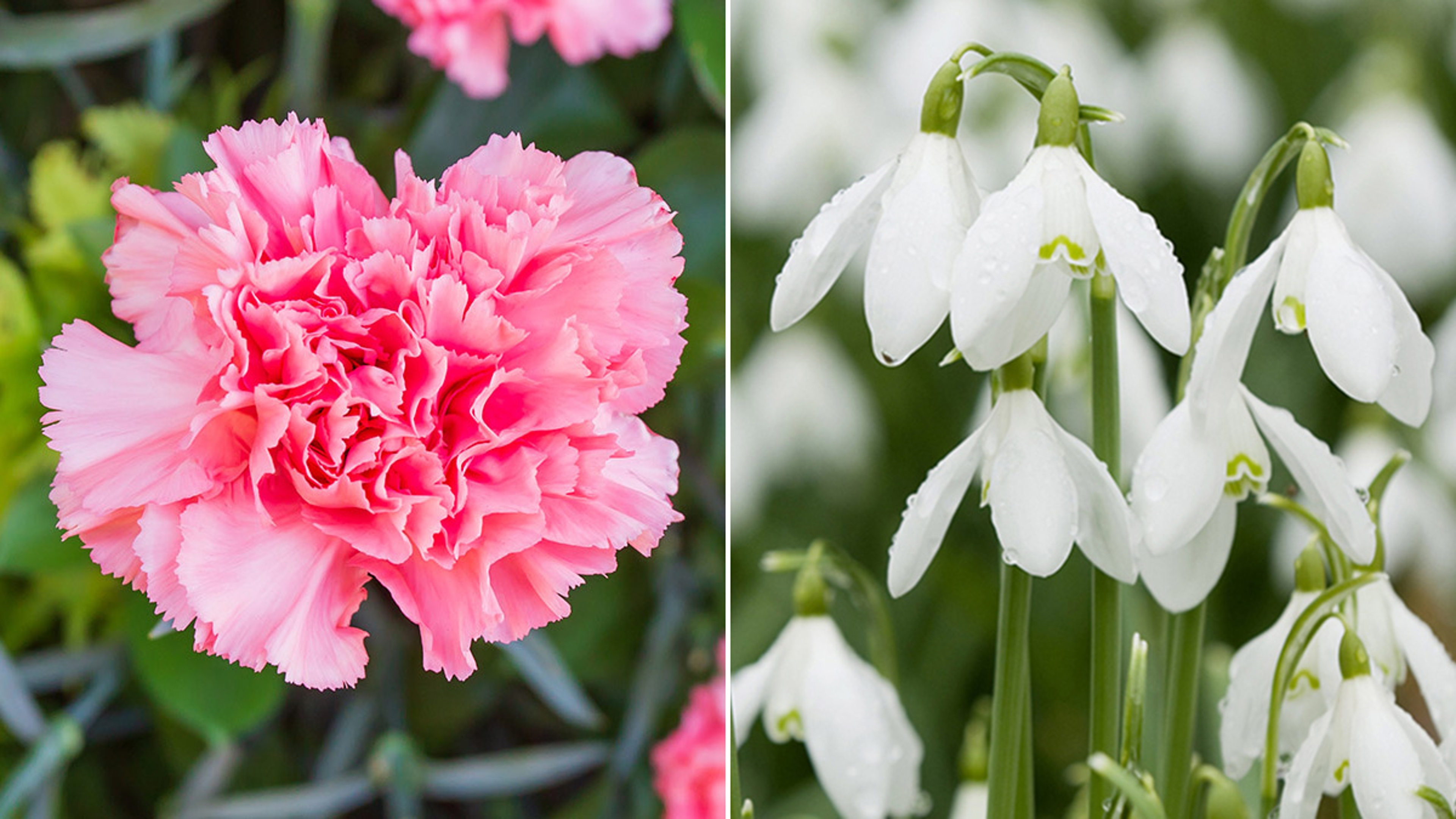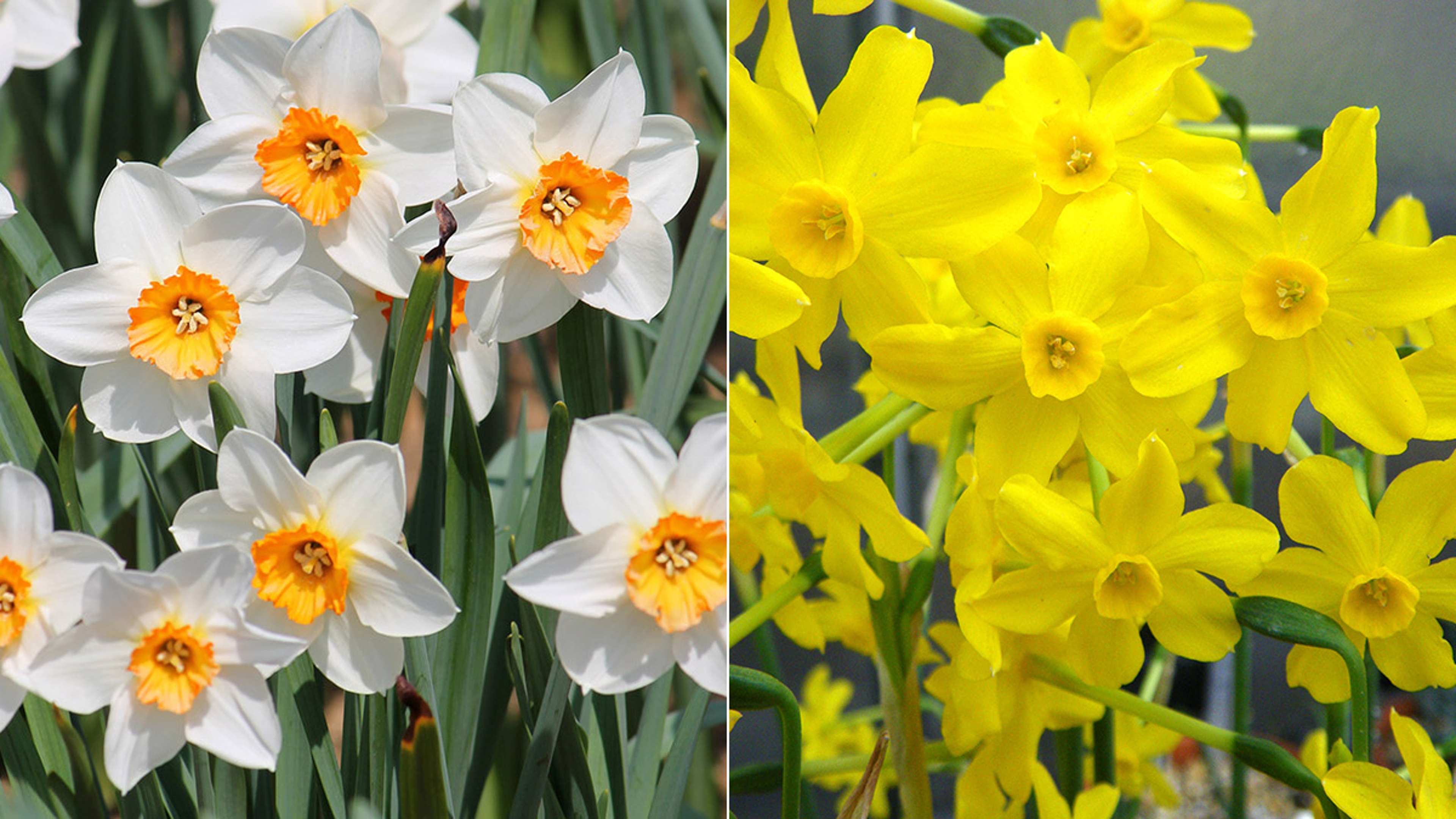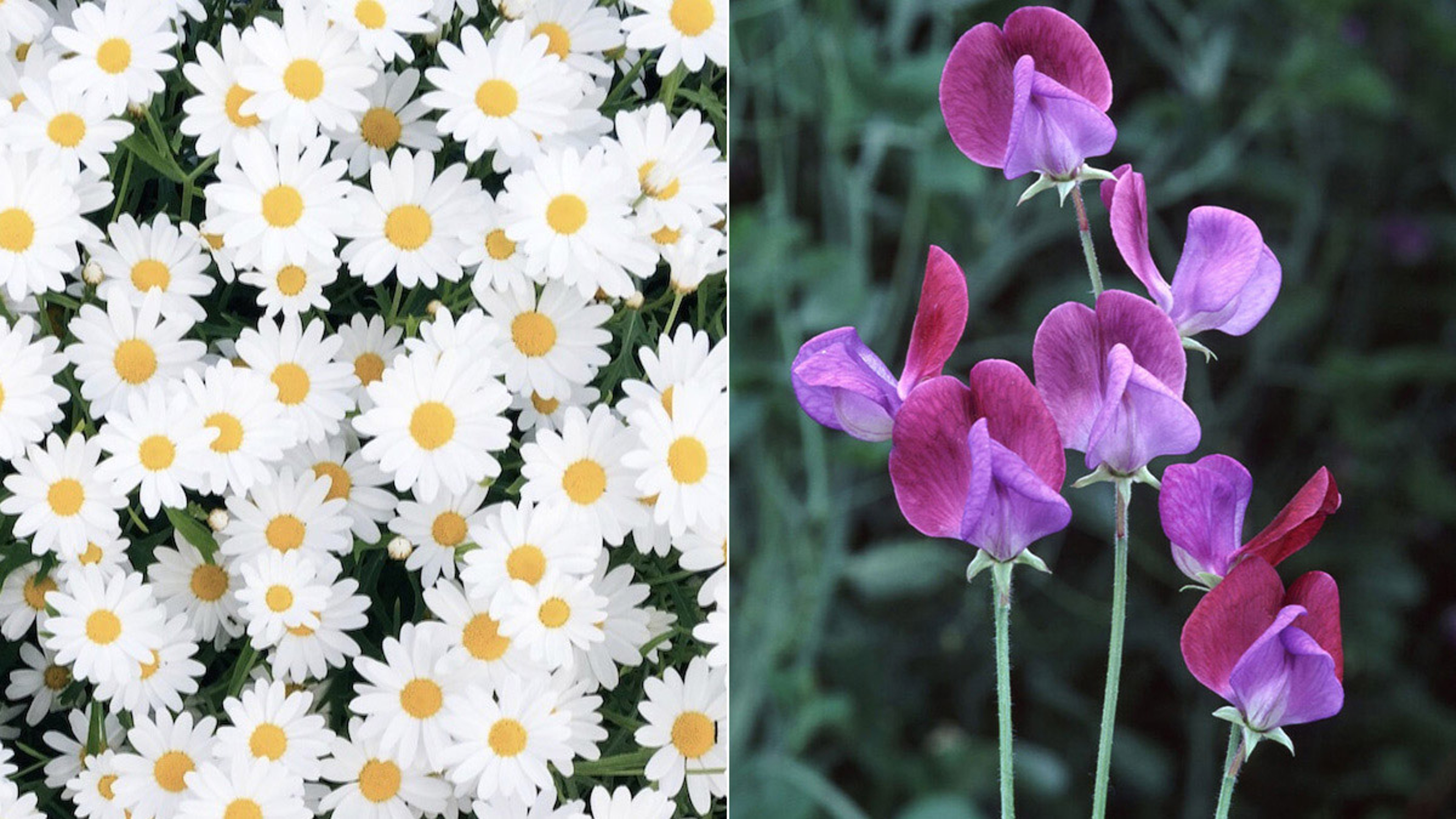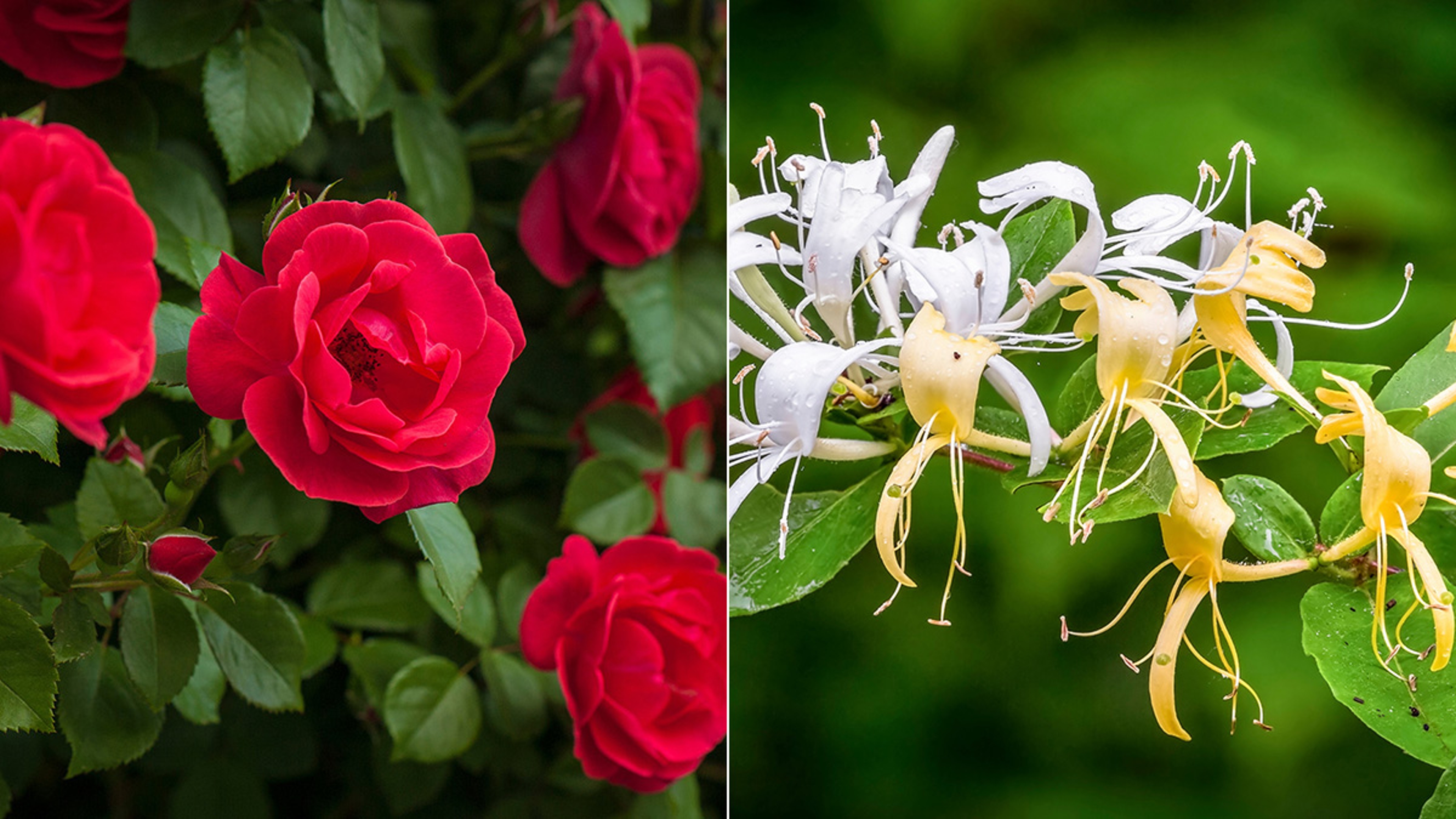Celebrating the July Birth Flowers: The Larkspur and Water Lily
One grows high into the air, the other on water ― but both are steeped in history and meaning.
Jun 11, 2024
As we bask in the golden glow of summer, July carries with it a pair of enchanting birth flowers, each of which carries its own unique beauty, history, and symbolism. Whether you're a July baby, a gardening enthusiast, or simply a lover of flowers, these two blossoms offer a glimpse into the wonders of nature.
The two July birth flowers are worth admiring, one for its towering spikes, the other for its serene beauty. Both bring a distinct charm to the summer months. Let's delve into the fascinating world of these beloved blooms, and let their stories and significance add a touch of magic to your summer days.
What are the July birth flowers?
The July birth flowers are the larkspur and water lily.

Larkspur, scientifically known as Delphinium, is a tall, stately flower that comes in a variety of colors, including shades of blue, purple, pink, and white. Its name is derived from the shape of its nectary, which resembles the claw of a lark. Native to the Northern Hemisphere and parts of Africa, larkspur prefers cool, moist conditions and environments with temperate climates. It is often found in meadows and gardens, standing out with its long, spike-like clusters of blooms.
The water lily, belonging to the family Nymphaeacaea, is an aquatic plant that graces ponds and still bodies of water. It is native to a wide range of regions across the world, predominantly those with temperate and tropical climates. With broad, round leaves floating on the surface and vibrant, multi-petaled flowers rising above, these flowers are renowned for their striking beauty. Water lilies are found in a variety of colors, including white, pink, yellow, blue, and purple.
What is the history of larkspur?
The name "delphinium" comes from the Greek word for “dolphin” ("delphin") because the flower buds were thought to resemble the shape of the aquatic mammal. The Greeks and Romans associated larkspur with protection and healing, believing the flower could ward off scorpions and other poisonous creatures.
In the Middle Ages, larkspur was often included in herbal remedies. Despite its toxic properties, it was believed to have medicinal benefits, such as treating parasites and reducing inflammation.
During the era of exploration and colonization, European settlers brought the plant to North America. There, it adapted well to new environments and became a common garden flower.
The 19th and 20th centuries saw the development of numerous delphinium hybrids and cultivars, especially in England and the United States. Breeders focused on enhancing the plant's ornamental qualities, such as flower size, color range, and plant hardiness. The resulting varieties became staples in cottage gardens and formal flower beds.
What is the meaning of larkspur?
Generally, larkspur represents positive traits. These include:
- An open heart and a strong bond of attachment: Larkspur represents the ability to show love and affection openly and freely.
- Levity and lightness: The flower is often associated with a happy, carefree nature.
It also has color-specific meanings attached to it. They are:
- Blue: Dignity and grace, and positivity
- Pink: Fickleness
- White: Joy and happiness
- Purple: First love
In the Victorian language of flowers, larkspur was used in bouquets to express feelings of love, admiration, and a light-hearted disposition.
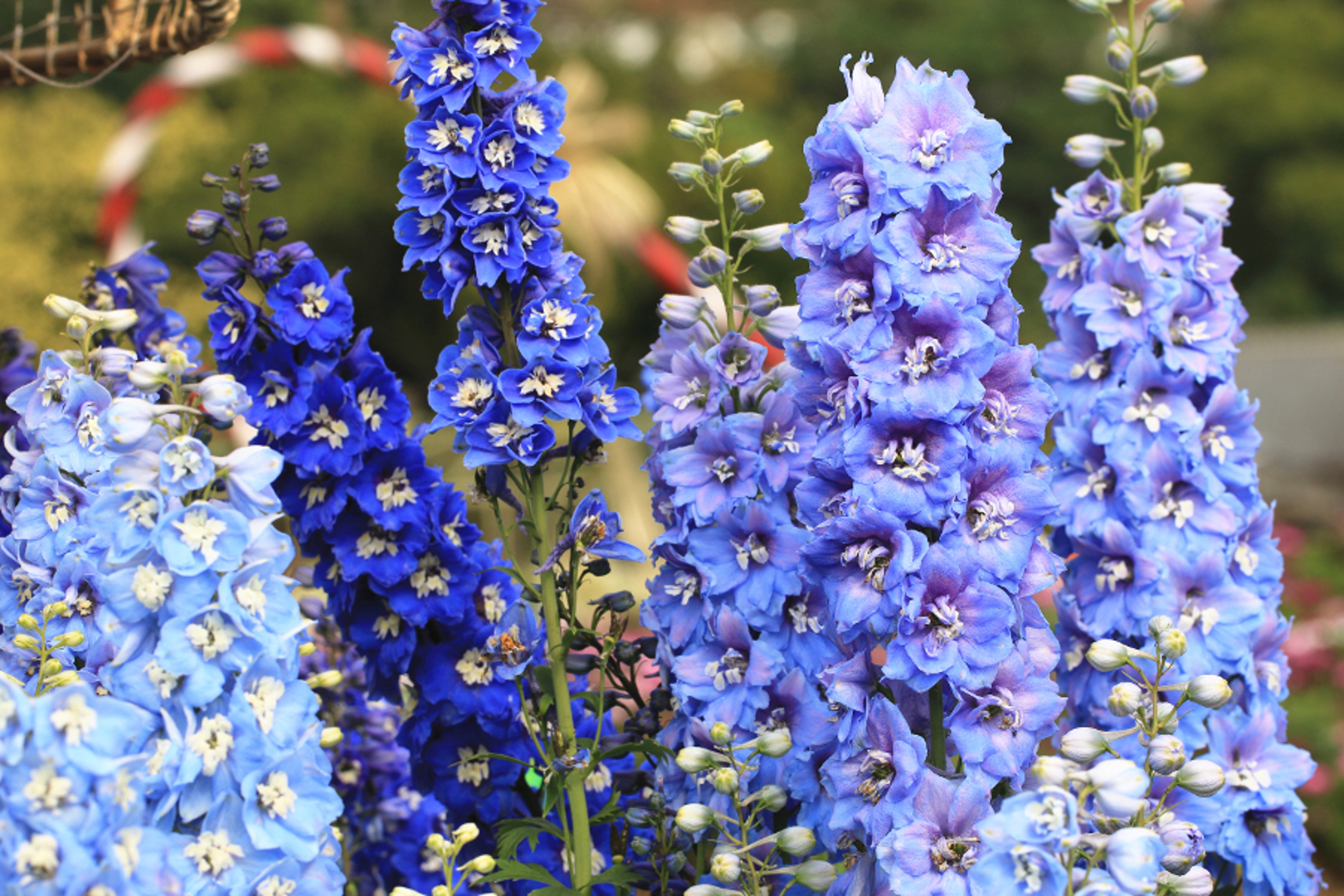
How to care for larkspur
If you plan on planting larkspur in your garden, be sure to follow these care tips.
- Soil: Larkspur prefers well-drained soil rich in organic matter. A neutral to slightly alkaline soil pH (around 6.5 to 7.5) is ideal.
- Location: Larkspur needs at least six hours of direct sunlight daily, so plant it in a location that receives full sun to partial shade.
- Watering: Keep the soil consistently moist, especially during the growing season.
- Fertilization: Use a balanced, slow-release fertilizer at planting time. Supplement with a water-soluble fertilizer every few weeks during the growing season.
- Staking: Tall varieties of larkspur often require staking to prevent them from toppling over. Use garden stakes or cages to support the flower spikes. Secure the stems to the stakes with soft ties to avoid damaging the plants.
- Seed germination: Larkspur seeds often require a period of cold stratification to germinate. Place seeds in a damp paper towel, seal in a plastic bag, and refrigerate for 2-3 weeks before planting.
3 interesting facts about larkspur
- Larkspur belongs to the buttercup family, Ranunculaceae, which includes other popular garden plants like anemones and buttercups.
- All parts of the larkspur plant are toxic if ingested, containing alkaloids that can cause serious health issues in humans and animals.
- Some delphinium species can grow exceptionally tall, reaching heights of up to 6 feet or more
July birth flower gift ideas
What is the history of the water lily?
The blue water lily was revered by the ancient Egyptians, who associated it with the sun god Ra and the concept of creation and rebirth. Water lilies frequently appeared in Egyptian art, including frescoes, pottery, and jewelry. They were also used in religious rituals and found in the tombs of pharaohs, including Tutankhamun, symbolizing the passage to the afterlife.
In Greek mythology, the water lily was linked to the nymphs. (The Latin name Nymphaea reflects this connection.) The Romans used various parts of the water lily plant for medicinal purposes, including treating inflammation and as an astringent.
The 19th and 20th centuries saw the development of numerous hybrids and cultivars of water lilies. Notable hybridizers, such as Joseph Bory Latour-Marliac in France, created stunning varieties that contributed to the popularity of water lilies in ornamental gardening. The famous French painter Claude Monet immortalized water lilies in his series of paintings, capturing their beauty in his garden at Giverny.
Water lilies remain a staple in water gardening and landscaping, admired for their aesthetic appeal and role in providing habitat for aquatic life.
What is the meaning of the water lily?
The key symbolic meanings associated with the water lily are:
Purity and innocence: Despite growing in muddy waters, the flower emerges clean and untouched, symbolizing purity and innocence in the face of adversity.
Enlightenment and spirituality: In both Hinduism and Buddhism, the water lily (often referred to as the lotus) represents the journey of the soul from the mud (worldly attachment) to the light (spiritual enlightenment).
Rebirth and resurrection: The water lily’s daily cycle of opening in the morning and closing at night symbolizes rebirth and the cyclical nature of life.
Beauty and grace: The water lily, with its elegant and serene appearance, is often used to convey aesthetic appreciation and the harmonious aspects of nature.
Peace and tranquility:Growing in still and calm waters, the water lily embodies a sense of calm and serenity, making it a popular symbol in gardens and art meant to evoke relaxation and harmony.

How to care for water lilies
Caring for water lilies is different from that for most other flowers, due to their aquatic nature.
First, make sure to choose the right type of water lily for where you live. Hardy water lilies are suitable for temperate climates and can survive winter if the rhizomes are below the ice line. Tropical water lilies prefer warmer climates and may need to be brought indoors or grown in heated water during the winter.
Location: Water lilies need at least six hours of direct sunlight daily for optimal blooming. They grow best in still or slow-moving water, such as ponds or water gardens.
Planting depth: Plant hardy water lilies with their rhizomes 12-18 inches below the water surface. Tropical water lilies should be planted 6-12 inches deep.
Containers: Plant water lilies in large containers to prevent the spread of rhizomes and make maintenance easier. Use heavy clay soil or aquatic planting media to anchor the plant.
Water quality: Ensure the water is clear and free from pollutants. Regularly remove debris and decaying plant material.
Fertilization: Use slow-release aquatic fertilizer tablets, inserting them into the soil around the plant every 4-6 weeks during the growing season (spring to late summer).
Pest control: Watch for aphids, snails, and water lily beetles, and use appropriate measures, such as biological controls (e.g., introducing natural predators) or organic insecticides.
Winter care:
For hardy water lilies: In colder climates, ensure the rhizomes are below the freeze line or bring the containers indoors to a cool, dark place, such as a basement or garage.
For tropical water lilies: Move tropical water lilies indoors before the first frost. Place them in a heated aquarium or container with warm water (60-75 degrees Fahrenheit).
3 interesting facts about water lilies
The waxy coating on the leaves of water lilies naturally repels water and debris, a self-cleaning process known as the "lotus effect.”
Some tropical water lilies can regulate their temperature, staying a few degrees warmer than the surrounding water.The giant water lily (Victoria amazonica), native to the Amazon River basin, has enormous leaves that can grow up to 10 feet in diameter and support the weight of a small child.
- The giant water lily (Victoria amazonica), native to the Amazon River basin, has enormous leaves that can grow up to 10 feet in diameter and support the weight of a small child.





